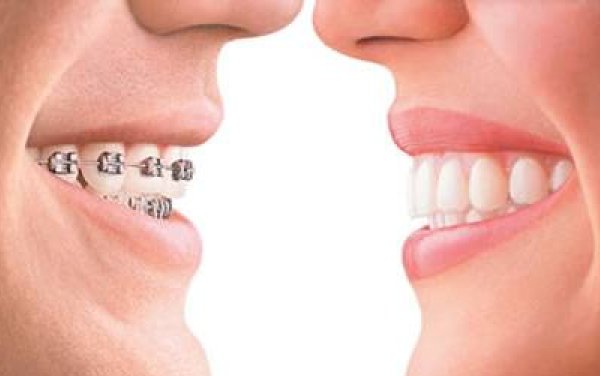
Brushing our teeth every morning is a part of our routine. No matter how busy we are or how our mood is, we never forget to brush; some of us even practice this habit at nights too. Taking care of our teeth is an integral part to keep ourselves healthy and appealing. Everyone believes that a good smile enlightens the face and brings glow to our face. A smiling person is known for his charm and can easily attract others. However white teeth are not enough to make us look attractive. Along with that we should also ensure that our teeth are properly aligned. Misalignment of teeth gives a messy look and spoils our appeal, even if we have sharp features and are fair. In today’s times, there are lots of dental remedies fixed by the dentists in no time. One of them is use of braces to fix misalignment and bring back a proper and desired shape of our jaws. Braces are the solution for any overcrowded teeth and also misalignment of your jaws. Explore the need for braces, its benefits, and also its risks through this article.
Requirement of braces
Dentists recommend braces if we have crooked and over crowded teeth, upper front teeth bigger in shape and prominent than other teeth, jaw misalignment, or upper front teeth that protrudes out of our lips, even when we close our mouth. Braces help to a great extent to resolve these dental problems and restore healthy teeth. You can continue proper brushing your teeth even with braces on. Braces can be used both by kids and adults alike; the only thing for adults is that they need to wear them a little longer than kids. Braces have a fixed time for wear, which the dentist recommends. If he feels that your teeth has the desired shape, you can be free.
Risk involved in implementing braces
Braces are not without risk. But you must always consult a dentist before deciding to wear braces as he is the only expert who can guide you correctly. Dentist will never suggest you braces unless he feels it safe. However you can find some problems by braces. One of the main disadvantage of braces is the food particles getting struck in the outer part of your teeth which leads to de-mineralization of teeth outer enamel and cavities. That means the food becomes stale and can lead to bad odor from the mouth, if not cleaned properly. When the braces are removed, a permanent whitish mark remains on your teeth surface which can give an awkward look.
Braces also lead to shorter life to root length. This means while fixing the tooth bone through braces, other tooth bone can become weak and can dissolve causing a loss in the of tooth root longevity. However, you can prevent this risk by taking some precautions like controlling your sweet and starch intake, brushing your teeth regularly with a soft brush and good fluoride toothpaste; even at nights before you sleep, rinsing your mouth thoroughly after eating anything, and regular visits to dentist.
Preparation for your brace application
Go for braces only if your orthodontist recommends. Children aged from 8-15 years generally gets braces as that is the time when their facial bone starts growing. Before putting on braces the orthodontist performs a physical examination of your mouth, jaw, and teeth by taking X-rays. Through this they detect your exact biting position between your upper and lower jaw. This helps them to understand the positions of jaws to teeth. Now a plaster model of your teeth is formed to evaluate your upper and lower bite. Often this plaster model is scanned for further treatment decision. Based on your tooth position, orthodontist may take the decision of extracting tooth from overcrowded teeth. It helps the other existing teeth to have enough space and fit in perfectly. After orthodontist implements braces on your teeth he can involve you to certain treatment plan and when followed that you might help yourself to have best teeth and smile ever.




